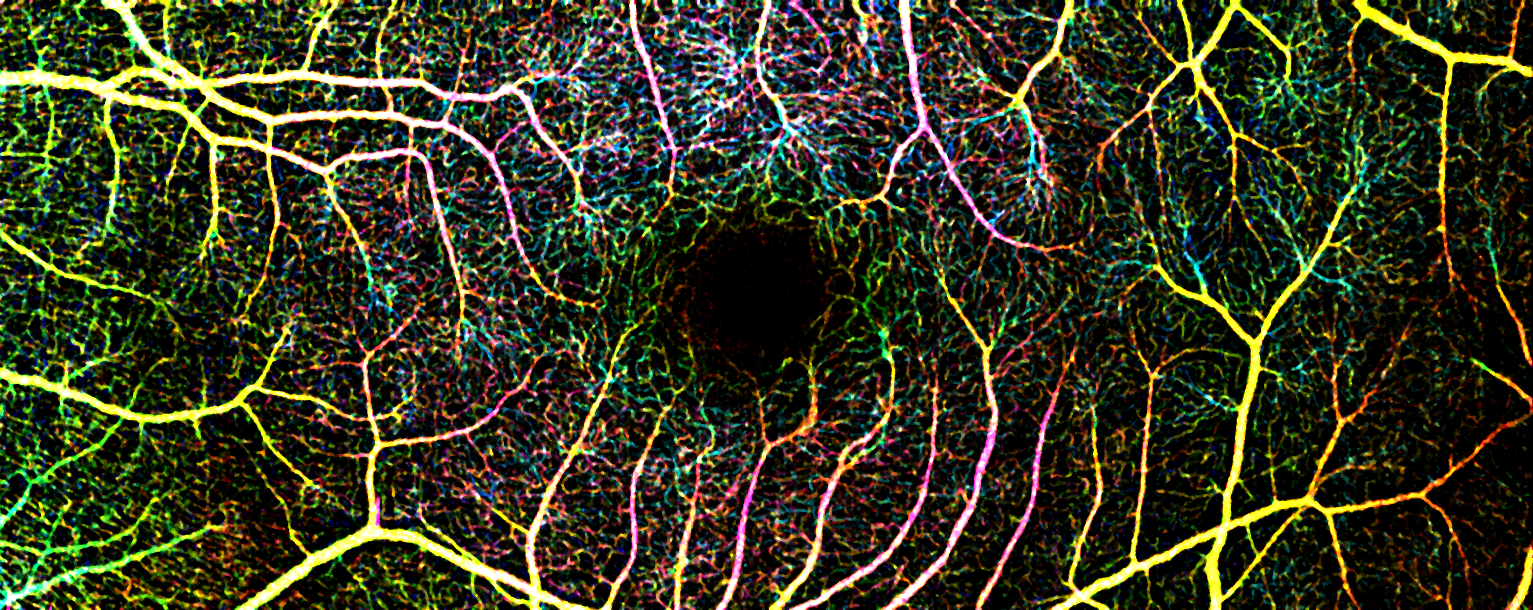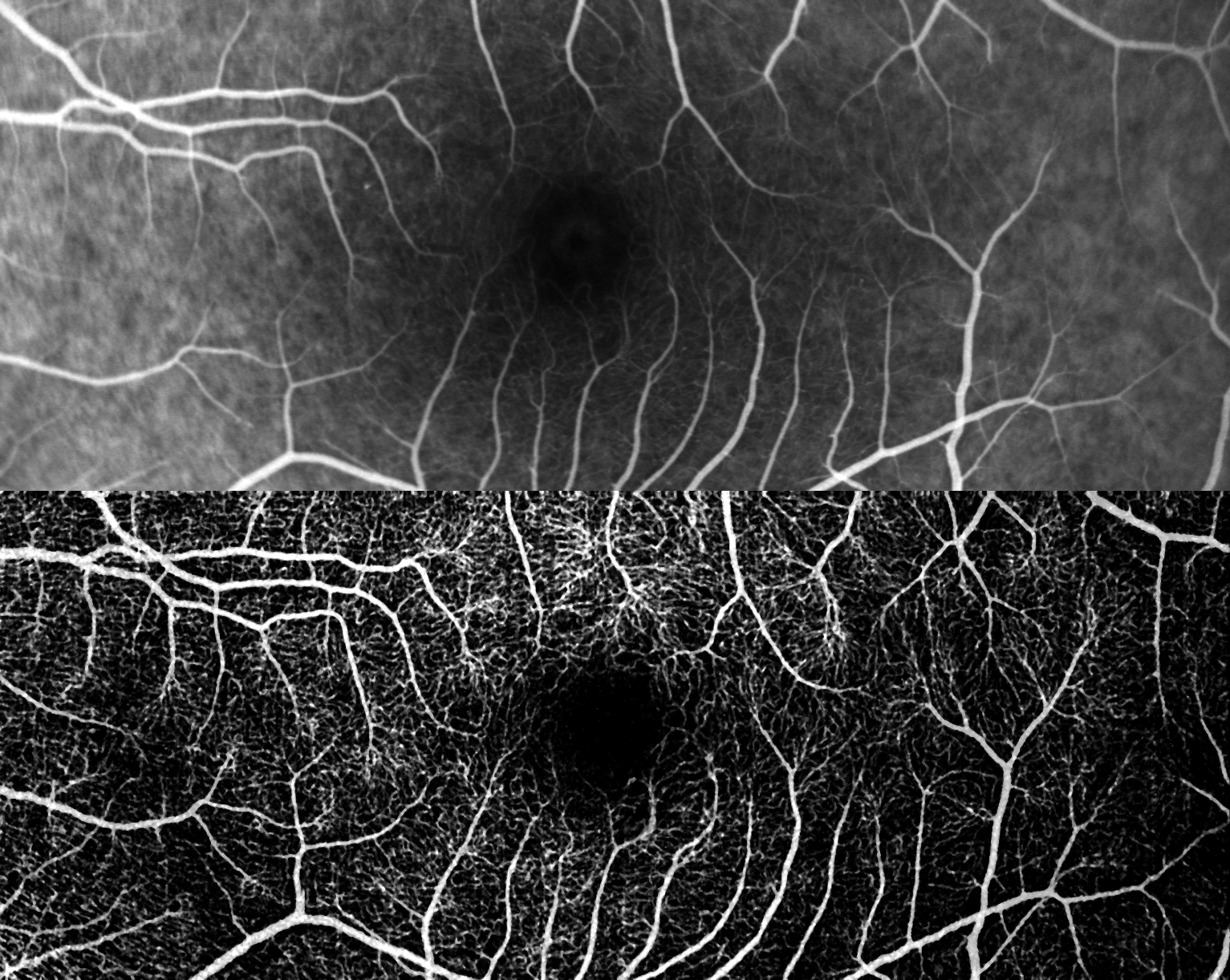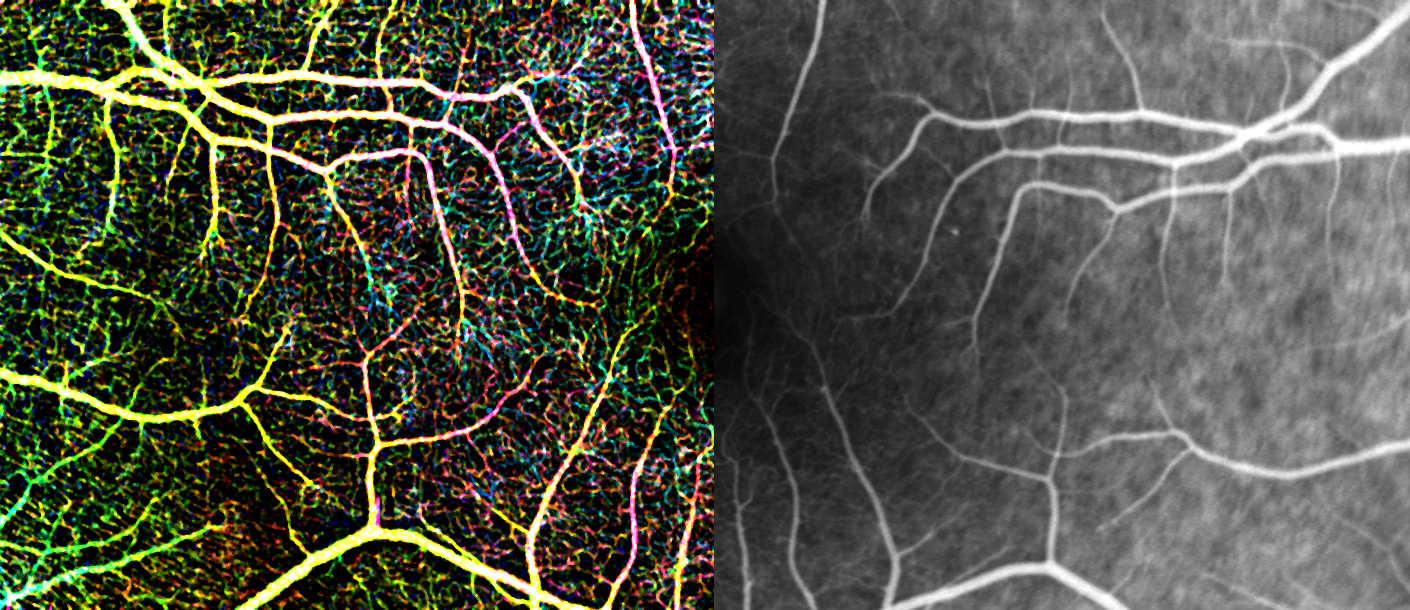Saving Sight
More than 7.7 million Americans suffer from diabetic retinopathy, the leading cause of blindness in American adults, according to the NIH’s National Eye Institute. However, current diagnostic methods are invasive and inconvenient, causing half of afflicted patients to forgo eye exams, oblivious to their advancing disease until it’s too late to receive sufficient treatment.
Researchers in the Translational Imaging Center, a joint venture between USC Dornsife College of Letters, Arts and Sciences and USC Viterbi School of Engineering, are improving optical coherence tomography (OCT), a system that quickly and non-invasively images the retina to simplify the diabetic retinopathy screening process.
Scott Fraser, Provost Professor at USC Dornsife, Keck School of Medicine at USC and USC Viterbi, and Jeff Fingler, senior scientist at the Translational Imaging Center, are leading the work, which could help the 50 percent of unidentified patients begin treatment earlier.
Described by Fraser as “an optical equivalent of an ultrasound machine,” OCT was originally invented by Keck School Dean Carmen Puliafito. The entire OCT angiography process only requires seconds, compared with the fluorescein method’s 10 minutes, and screens patients without the inconvenience of injections and dilations, or the intense blue flashing light.
Fraser and Fingler hope to have OCT screening stations widely available in drug stores, much like the blood pressure monitors already in use there.
“If these instruments were in pharmacies, patients could pick up their medications and look into the machine, making screening [for diabetic retinopathy] more of an everyday thing,” Fraser said.






